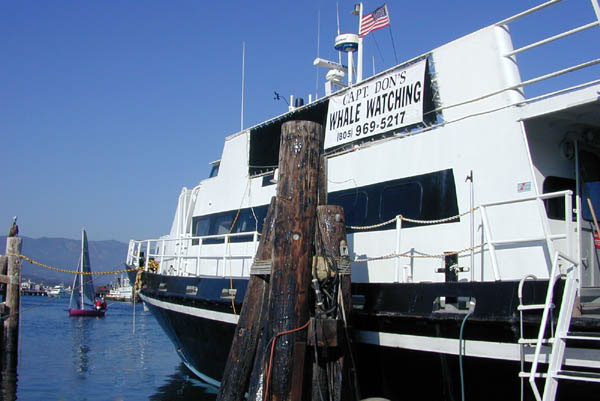Population Dynamics
Although whalers used to kill many of the gray whales, there have always been natural mortalities each year. In 2000 there were ten young male gray whales that died in Baja. They were not babies and none of them appeared to be starving. This picture shows the back of one of these dead whales with all of the ectoparasites gone from its skin. Notice the rack of baleen still along the upper jaw. (GA image) |
| Whaling reduced the numbers of gray whales to only a few thousand by the mid 1900s. The International Whaling Commission (IWC) banned the harvest of this species in 1946. In the United States the gray whale was listed as an endangered species in 1970. The Mexican government set aside Scammon's Lagoon and San Ignacio Lagoon as "protected areas" in the 1970s. This was a remarkable event, not only for the gray whale but also for other wetland species. In California most of the wetlands were destroyed as the population grew and wetlands became landfills or turned into shopping malls and housing developments until the early 1990s. Both Scammon's Lagoon and San Ignacio Lagoon are two of the largest wetland areas on the Pacific Coast of North America and they have been relatively well preserved by the Mexican government. |
This baby gray whale is only one of many babies born each year in the Baja lagoons. (GA image) |
| The gray whale population made a remarkable recovery to pre-exploitations levels by 1994. This was due to a combination of the protection of the Baja lagoons, the international ban on the taking of gray whales, and an interest by many scientific and environmental groups. In 1994 the gray whale was removed from the United States list of Endangered and Threatened Wildlife. It was determined that the gray whale population had reached 15,000 to 24,000 individuals - the level it was believed to have been prior to whaling. This recovery is for the eastern Pacific stock of the gray whale (sometimes referred to as the California gray whale) only. Almost nothing is known of the state of the small Korean gray whale population (either historically or at the present). A group of researchers from Moss Landing Marine Laboratory in California have started a research project to try to determine the status of this group. As with everything in our natural world, knowledge and education are our keys to understanding nature. |
 |
Whale watching boat in California, common all along the coast in almost every harbor. (GA image) |
| The recovery of the gray whale along the West Coast of North America is a unique success story and continues to contribute to the ever increasing activity of "whale watching" - our 21st century replacement of the "whaling" of the 1800s. It is interesting that in most countries the economy gains more money with whale watching enterprises than it can with whaling for whale meat. |
|

